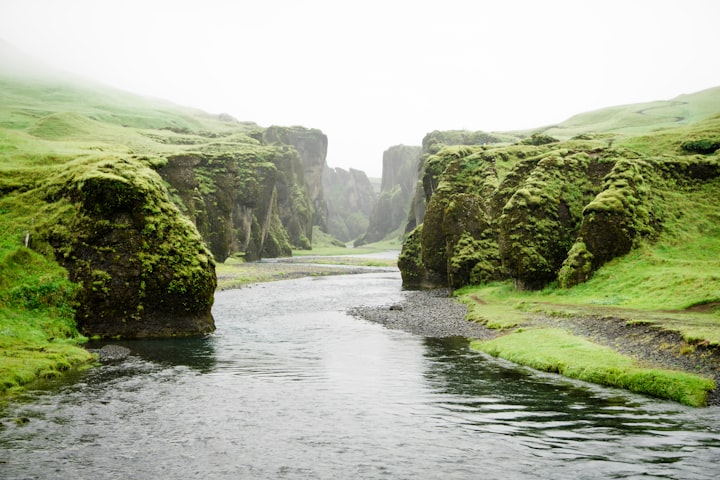My Favorite Works of Fiction Use Setting Like a Character
Some tips about authentic place descriptions

When I think about writing fiction, I spend a lot of time considering the fundamentals. Character, setting, theme, tone and language can completely reinvent a story. Every Shakespeare play or Jane Austin story reinvented into a 90’s (Clueless) or early 2000s rom-com (10 Things I Hate About You) rom-com are examples of how you can take a compelling story and make it fresh and original.
The best-used settings are done in a way that you can’t imagine the story being told anywhere else in any other place.
As a lover of travel and history, I love learning about exotic times and places. I especially love it when it’s written from the perspective of someone who truly seems to know what it’s like. I love to read international authors because of this innate knowledge, though an author who has done extensive research can create a similar effect. Here are some of the things that make setting shine in well-written fiction (many of these tips apply to non-fiction, too).
Specific Details Without Overexplaining
I love specific, local detail. In the best setting descriptions, if flowers are mentioned, they are named by species. You know if they are fragrant and they are blooming at the right time of year as well as the correct time of day or night. New Orleans nighttimes are punctuated by the scent of sweet, night-blooming jasmine, but never the day. Tulips are found in the day, but only briefly in the springtime and have no scent at all. My favorite setting descriptions will briefly mention the sight or scent, the species it came from (never something as general as flowers, but bonus points if there is a local name for it or a name in the language of the setting location) and it will be a quick aside in the background. Any character living there probably won’t give it more than a passing glance, and to spend too much time describing it pulls me out of the story.
The same is true if you have a tool or trade that is unique to the area. If you are writing in the past and your character is not a blacksmith, a detail like the smell of smoke and the sight of flying embers can set a tone. But don’t go into the process unless it’s part of the story or the point of view of a main character. Names of rivers, the traditional name of the mountain that looms over a town, local ghost stories and seasonal activities unique to an area, like mushroom picking or carnivals are all great examples of this kind of detail.
At times, writers who have researched seem to have learned a lot of interesting facts, but when they write as their character, a lifelong resident of a certain area, they portray their thoughts as if they were a tourist experiencing an area for the first time so that they can explain as much of their research as possible. For me, a few well-chosen details feel stronger and more authentic than a guided tour.
One last note- readers like me will look up a word if we don’t recognize it and are interested enough. Don’t stop the story to provide a definition as your character ponders the pretty flowers. Give us some quick details that are accurate and relevant and let us do the rest of the work.
Mindset, Culture and Language
Anyone who is bilingual can tell you that there are different words and concepts that are presented in one language but not another. There are many subtle ways in which a language can shape you, even with things as innocuous as gendered articles for nouns. Whether a bridge is female or male can have some native speakers describing the same item as sturdy and practical versus delicate and beautiful when asked for a description. Understanding this can help your characters to sound more like the place they are from.
The more a character follows the mindset of their location, the more immersed I get in a story. This is even true of regional differences. I was a bit of a nomad, traveling throughout the United States in my twenties. After living in 10 states, I can tell you that people in Kentucky spoke more often about severe weather events and drove more slowly in the rain than anywhere else I lived. Pacific Northwest folk are quick with a smile and a kind word but it can take years to get invited to a backyard barbecue hosted by someone who grew up there. These small cultural differences shape us, and if you really know your setting and the people who live there, you can reflect this in their cultural fears and appreciations, their small talk topics and their typical activities. Authenticity on this front feels like a treasure when I find it in a story. Again, it is best placed in the story subtly, on the way to a plot point. If you call too much attention to it the magic disappears.
Finally, culture. If you are not from the culture and you have access to someone from that place, let them read the piece and find things that ring false to them. It makes a story endlessly better to portray someone of a culture as accurately as possible. If that person is open to discussing it more, there is probably a wealth of insight to consider adding to enrich your story even more.
What Do You Love in a Story?
As readers, we are unique in our tastes. These are some of the things in books with authentic settings and descriptions that make me return to the story or think of it years later. If you are looking to improve your setting descriptions, consider my thoughts or think back to your own favorite stories where place stood out above all else. Re-read the piece and highlight your favorite passages. Think about what makes them unique. Is the description from a local or an outsider? Is it beautiful language or a weaving of theme and description that keeps you captivated? Try to define the writer’s tools so you can add them to your own set of skills in your next great work of fiction.
About the Creator
Penny Fuller
(Not my real name)- Other Labels include:
Lover of fiction writing and reading. Aspiring global nomad. Shy Gen-Xer. Woman in science. Relocated midwesterner. Blended family mom. Most at home in nature.






Comments
There are no comments for this story
Be the first to respond and start the conversation.